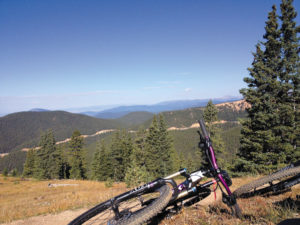Part Two
By John Mattingly
Farmers and gardeners look to the scientific method for guidance, after exhausting their instincts, intuition, indications from their bones, and the testimony of others, which is likely based on instincts, intuitions and bones.
This is why I’m reluctant to offer or accept growing tips. People with a Green Thumb can’t really explain what they do and even if mimicked, most of the mystery remains. There is art, magic, intelligence, and diligence in growing crops. That, and a lot of luck.
For the first few years after I started farming, I had the ambition of a box of frogs, jumping to conclusions here and there about the influence and importance of my decisions. I remember thinking I had to moldboard plow fourteen inches or suffer poor crops, and wait until a crop showed stress before first irrigation, and plant early so the crop gained vigor from the cold, and use certain forms of fertilizer, and special weed and pest control, and various other bits of advice that occasionally showed a clear correlation to the outcome, but seldom showed causation.
The realization dawned on me: a farm and garden are actually a solar collector, and the real power and influence come from the sun. To understand what was actually happening during a growing season the determining functions are the heat units (a.k.a. degree-days or Growing Degree Days) received, the timing of frosts and heat waves, the timing of wet spells and dry stretches, and the timing of winds, all of which are functions driven by the sun.
While it’s true that farmers come to field with a lot of power, most of the energy applied and then created on a plot of ground is from the sun, and most of the energy the farmer brings to the field is in the form of oil, natural gas, and coal, which are themselves forms of stored solar energy. Human agriculture has become totally dependent on old solar energy to function, let alone thrive.
[InContentAdTwo] When sun-driven influences mix with human inputs, an array of variables emerges that is not only more than any farmer knows, it is more than they can know. This helps to explain why certain crops do famously one year and not the next, even though the human input is the same both years. It also explains why sometimes a farmer does best in a year that s/he does less and does worst in a year when s/he worked more.
Humans characteristically overestimate their significance. The most common error is the classic logical fault of confusing correlation with causation (the field received 100 units of nitrogen, therefore the yield was 120 bushels per acre) and failing to distinguish between necessary and sufficient (a rose is red, a poppy is red, therefore a rose is a poppy).
In the deepest, darkest hours of the night, farmers and gardeners will admit that what they know is far less than the sum of the unknowns they encounter when farming. In some ways, farming and gardening are great teachers of the importance of ignorance.
To know it all quickly becomes indistinguishable from knowing nothing at all. That said, we’ve been eating greens and strawberries for three months, peas for two months, sweet corn, onions and tomatoes for one month, and expect beets, beans and potatoes soon
John Mattingly cultivates prose, among other things, and was most recently seen near Moffat.


